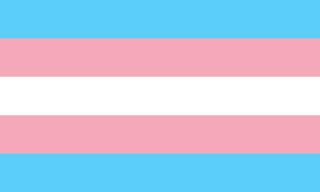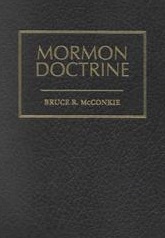The law of chastity is a moral code defined by the Church of Jesus Christ of Latter-day Saints. According to the church, chastity means that "sexual relations are proper only between a man and a woman who are legally and lawfully wedded as husband and wife." Therefore, abstinence from sexual relations outside of marriage, and complete fidelity to one's spouse during marriage, are required. As part of the law of chastity, the church teaches its members to abstain from adultery and fornication.

Affirmation: LGBTQ Mormons, Families, & Friends is an international organization for individuals who identify as gay, lesbian, transgender, bisexual, queer, intersex, or same-sex attracted, and their family members, friends, and church leaders who are members or former members of the Church of Jesus Christ of Latter-day Saints.

Evergreen International, Inc. was a nonprofit, tax-exempt organization located in Salt Lake City, Utah whose stated mission was to assist "people who want to diminish same-sex attractions and overcome homosexual behavior". Evergreen supported the doctrines of the Church of Jesus Christ of Latter-day Saints. Founded in 1989, Evergreen closed in 2014.
Teachings on Sexuality in the Church of Jesus Christ of Latter-day Saints is deeply rooted in its doctrine. In its standards for sexual behavior called the law of chastity, top LDS leaders bar all premarital sex, all homosexual sexual activity, the viewing of pornography, masturbation, overtly sexual kissing, sexual dancing, and sexual touch outside of a heterosexual marriage. LDS Leaders teach that gender is defined in premortal life, and that part of the purpose of mortal life is for men and women to be sealed together in heterosexual marriages, progress eternally after death as gods together, and produce spiritual children in the afterlife. The church states that sexual relations within the framework of monogamous opposite-sex marriage are healthy, necessary, and approved by God. The LDS denomination of Mormonism places great emphasis on the sexual behavior of Mormon adherents, as a commitment to follow the law of chastity is required for baptism, adherence is required to receive a temple recommend, and is part of the temple endowment ceremony covenants devout participants promise by oath to keep.

All homosexual sexual activity is condemned as sinful by the Church of Jesus Christ of Latter-day Saints in its law of chastity, and the church teaches that God does not approve of same-sex marriage. Adherents who participate in same-sex sexual behavior may face church discipline. Members of the church who experience homosexual attractions, including those who self-identify as gay, lesbian, or bisexual remain in good standing in the church if they abstain from same-sex marriage and any homosexual sexual activity or sexual relationships outside an opposite-sex marriage. However, all people, including those in same-sex relationships and marriages, are permitted to attend the weekly Sunday meetings.
North Star Saints is an organization for LGBT people in the Latter-day Saint community. North Star is described as a faith-affirming resource for Latter-day Saint people addressing sexual orientation and gender identity who desire to live in line with teachings of the Church of Jesus Christ of Latter-day Saints. North Star supports the teaching of the Church of Jesus Christ, including the law of chastity and teachings on homosexuality, which prohibits sexual relationships outside of a legal marriage between one man and one woman, as well as teachings on gender identity and expression. The organization takes "no official position on the origin or mutability of homosexual attractions or gender identity incongruence", and does not "endorse political causes or join political coalitions, including those officially sanctioned by the [LDS] Church."
Students identifying as LGBTQIA+ have a long, documented history at Brigham Young University (BYU), and have experienced a range of treatment by other students and school administrators over the decades. Large surveys of over 7,000 BYU students in 2020 and 2017 found that over 13% had marked their sexual orientation as something other than "strictly heterosexual", while the other survey showed that .2% had reported their gender identity as transgender or something other than cisgender male or female. BYU is the largest religious university in North America and is the flagship institution of the educational system of the Church of Jesus Christ of Latter-day Saints —Mormonism's largest denomination.
In society at large, LGBT individuals, especially youth, are at a higher risk of depression, anxiety, and suicide. Though causes of mental health risk are complex, one often cited reason for these higher risks is minority stress stemming from societal anti-LGBT biases and stigma, rejection, and internalized homophobia.
Although the historical record is often scarce, evidence points to LGBT individuals having existed in the Mormon community since its beginnings, and estimates of the number of LGBT former and current Mormons range from 4 to 10% of the total membership of the LDS Church. However, it wasn't until the late 1950s that top LDS leaders began regularly discussing LGBT people in public addresses. Since the 1970s a greater number of LGBT individuals with Mormon connections have received media coverage.

Transgender people and other gender minorities currently face membership restrictions in access to priesthood and temple rites in the Church of Jesus Christ of Latter-day Saints —Mormonism's largest denomination. Church leaders have taught gender roles as an important part of their doctrine since its founding. Only recently have they begun directly addressing gender diversity and the experiences of transgender, non-binary, intersex, and other gender minorities whose gender identity and expression differ from the cisgender majority.
This is a timeline of LGBT Mormon history in the first half of the 20th century, part of a series of timelines consisting of events, publications, and speeches about LGBTQ+ individuals, topics around sexual orientation and gender minorities, and the community of members of the Church of Jesus Christ of Latter-day Saints. Although the historical record is often scarce, evidence points to queer individuals having existed in the Mormon community since its beginnings. However, top LDS leaders only started regularly addressing queer topics in public in the late 1950s. Since 1970, the LDS Church has had at least one official publication or speech from a high-ranking leader referencing LGBT topics every year, and a greater number of LGBT Mormon and former Mormon individuals have received media coverage.

Because of its ban against same-sex sexual activity and same-sex marriage the Church of Jesus Christ of Latter-day Saints has a long history of teaching that its adherents who are attracted to the same sex can and should attempt to alter their feelings through righteous striving and sexual orientation change efforts. Reparative therapy is the pseudoscientific practice of attempting to change an individual's sexual orientation from homosexual or bisexual to heterosexual, or their gender identity from transgender to cisgender using psychological, physical, or spiritual interventions. There is no reliable evidence that such practices can alter sexual orientation or gender identity, and many medical institutions warn that conversion therapy is ineffective and potentially harmful.

The Church of Jesus Christ of Latter-day Saints has been involved with many pieces of legislation relating to LGBT people and their rights. These include playing an important role in defeating same-sex marriage legalization in Hawaii, Alaska, Nebraska, Nevada, California, and Utah. The topic of same-sex marriage has been one of the church's foremost public concerns since 1993. Leaders have stated that it will become involved in political matters if it perceives that there is a moral issue at stake and wields considerable influence on a national level. Over a dozen members of the US congress had membership in the church in the early 2000s. About 80% of Utah state lawmakers identied as Mormon at that time as well. The church's political involvement around LGBT rights has long been a source of controversy both within and outside the church. It's also been a significant cause of disagreement and disaffection by members.
This is a timeline of LGBT Mormon history in the 1970s, part of a series of timelines consisting of events, publications, and speeches about LGBTQ+ individuals, topics around sexual orientation and gender minorities, and the community of members of the Church of Jesus Christ of Latter-day Saints. Although the historical record is often scarce, evidence points to queer individuals having existed in the Mormon community since its beginnings. However, top LDS leaders only started regularly addressing queer topics in public in the late 1950s. Since 1970, the LDS Church has had at least one official publication or speech from a high-ranking leader referencing LGBT topics every year, and a greater number of LGBT Mormon and former Mormon individuals have received media coverage.
This is a timeline of LGBT Mormon history in the 1980s, part of a series of timelines consisting of events, publications, and speeches about LGBTQ+ individuals, topics around sexual orientation and gender minorities, and the community of members of the Church of Jesus Christ of Latter-day Saints. Although the historical record is often scarce, evidence points to queer individuals having existed in the Mormon community since its beginnings. However, top LDS leaders only started regularly addressing queer topics in public in the late 1950s. Since 1970, the LDS Church has had at least one official publication or speech from a high-ranking leader referencing LGBT topics every year, and a greater number of LGBT Mormon and former Mormon individuals have received media coverage.
This is a timeline of LGBT Mormon history in the 1990s, part of a series of timelines consisting of events, publications, and speeches about LGBTQ+ individuals, topics around sexual orientation and gender minorities, and the community of members of the Church of Jesus Christ of Latter-day Saints. Although the historical record is often scarce, evidence points to queer individuals having existed in the Mormon community since its beginnings. However, top LDS leaders only started regularly addressing queer topics in public in the late 1950s. Since 1970, the LDS Church has had at least one official publication or speech from a high-ranking leader referencing LGBT topics every year, and a greater number of LGBT Mormon and former Mormon individuals have received media coverage.
This is a timeline of LGBT Mormon history in the 2010s, part of a series of timelines consisting of events, publications, and speeches about LGBTQ+ individuals, topics around sexual orientation and gender minorities, and the community of members of the Church of Jesus Christ of Latter-day Saints.
Below is a timeline of major events, media, and people at the intersection of LGBT topics and Brigham Young University (BYU). BYU is the largest university of the Church of Jesus Christ of Latter-day Saints. Before 1959 there was little explicit mention of homosexuality by BYU administration.

Homosexuality has been publicly discussed by top leaders in the Church of Jesus Christ of Latter-day Saints —Mormonism's largest denomination—since the late 1800s. The frequency of teachings on same-sex sexual activity increased starting in the late 1950s. Most discussion focuses on male homosexuality and rarely mentions lesbianism or bisexuality. Below is a timeline of notable speeches, publications, and policies in the LDS church on the topic of homosexuality.
The Foundation for Attraction Research (FAR) was a Utah-based research and publishing institute with the goal of providing literature and conducting research supportive of religious teachings of the Church of Jesus Christ of Latter-day Saints on homosexuality, including asserting that sexual orientation change efforts were effective. One of the founders, A. Dean Byrd, was also in leadership of the National Association for Research & Therapy of Homosexuality (NARTH). FAR published a guidebook for therapists in 2009, and the LDS Church's counseling organization LDS Family Services held a conference based on the book in 2011. The book advised homosexual readers to seek reparative therapy through Evergreen International and LDS Family Services.













